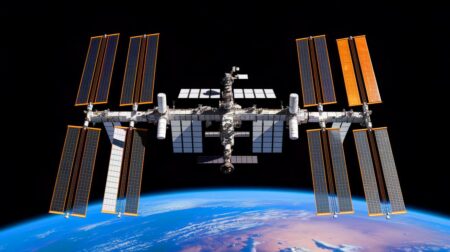| IN A NUTSHELL |
|
The enigmatic force of gravity, while often perceived as a constant, is in fact dynamic and complex, fluctuating due to various natural phenomena. Recent advancements have led to the development of the Quantum Gravity Gradiometer Pathfinder (QGGPf), a remarkable collaboration between NASA, private enterprises, and academic institutions. This pioneering quantum sensor is set to revolutionize our understanding of Earth’s gravitational shifts from space. By delving into the nuances of these changes, scientists aim to enhance resource management, disaster prediction, and climate analysis, offering profound insights into our planet’s intricate systems.
The Science of Gradiometers
The core of the QGGPf mission lies in its innovative gradiometer, an instrument designed to detect subtle variations in Earth’s gravitational field by contrasting the acceleration of two proximate objects, known as test masses. When gravity is stronger, these masses fall with increased acceleration, providing vital data on gravitational inconsistencies.
The QGGPf employs a groundbreaking technique involving clouds of rubidium atoms cooled to near absolute zero (~0 Kelvin). At such low temperatures, these atoms behave like waves, allowing the gradiometer to measure minute differences in their acceleration. This wave-based measurement is crucial for mapping gravitational variations with unprecedented accuracy.
Conducting these measurements in space offers a significant advantage, as it eliminates the environmental disturbances present on Earth. This ensures that scientists can acquire more precise data, paving the way for a deeper understanding of Earth’s gravitational shifts. Sheng-wey Chiow, a physicist at JPL, emphasizes the reliability of using ultra-cold atoms as test masses, highlighting their consistency and reduced sensitivity to environmental factors.
Scientists create heat-resistant super corals that could save entire marine ecosystems from collapse
A Unique Innovation
Quantum sensors, like those used in the QGGPf, represent a major leap forward in precision measurement. These sensors boast sensitivity levels potentially ten times greater than traditional sensors and are significantly more compact and lightweight. For example, the QGGPf is projected to weigh a mere 275 lbs and occupy a volume of only 0.25 cubic meters.
NASA plans to deploy this cutting-edge instrument by 2030, marking the first time such a technology will be tested in space. The deployment will serve as a crucial step in advancing both the quantum gravity gradiometer itself and the broader field of quantum technology. Ben Stray, a postdoc researcher at JPL, underscores the importance of this mission, noting its potential to unlock numerous secrets about Earth’s gravitational field.
Potential Applications and Impacts
The implications of the QGGPf mission are vast and varied. By offering precise gravitational measurements from space, the mission holds the potential to transform several fields. Accurate data on gravitational fluctuations can significantly enhance our ability to manage natural resources effectively, from petroleum reserves to freshwater supplies.
Scientists create heat-resistant super corals that could save entire marine ecosystems from collapse
Furthermore, understanding these gravitational shifts can lead to improved models for predicting natural disasters like earthquakes and tsunamis, providing critical information that might help mitigate their impact. Additionally, these insights could play a pivotal role in assessing the effects of climate change, as shifts in Earth’s mass distribution often relate to melting ice caps and changes in sea levels.
The knowledge gained from this mission will not only enrich scientific understanding but could also foster technological advancements in various sectors, driving innovation and offering new solutions to age-old challenges.
Collaborative Efforts and Future Prospects
The development of the QGGPf underscores the importance of collaboration between NASA, private companies, and academic institutions. This partnership enhances the potential for groundbreaking discoveries and technological breakthroughs. By pooling resources and expertise, these entities are setting a precedent for future scientific endeavors.
Looking ahead, the success of the QGGPf could catalyze further exploration into quantum sensing technologies, broadening their application to other domains. As researchers continue to push the boundaries of what is possible, the potential for new insights into the universe remains vast and exciting.
Ultimately, the QGGPf mission exemplifies how innovation and collaboration can drive science forward, offering new tools to understand and interact with our world in ways previously thought unimaginable.
As NASA prepares for the launch of the Quantum Gravity Gradiometer Pathfinder, the scientific community eagerly anticipates the insights it will bring. Will this mission pave the way for even more ambitious explorations of Earth’s invisible forces, and how might these discoveries reshape our understanding of the universe?
Did you like it? 4.5/5 (25)









Wow, this sounds like something straight out of a sci-fi movie! 🚀
Can’t wait to see how accurate this new technology is. Will it really be 10 times better?
I’m curious, how does cooling rubidium atoms help with gravity measurements? 🤔